Abstract
Swine were fed either a diet containing 110 mg of chlortetracycline (CTC) per kg (100 g/ton) or a control diet and were inoculated orally with Salmonella typhimurium that was either susceptible or resistant to CTC. The quantity, duration, and prevalence of fecal elimination of S. typhimurium, as well as the effect of CTC on the transmission of S. typhimurium from infected to uninfected swine, were determined. When animals were infected with CTC-resistant S. typhimurium, CTC increased the quantity (P < 0.05), duration (P < 0.05), and prevalence (P < 0.01) of fecal shedding, the transmission from infected to uninfected swine, and the recovery of the infecting organism at necropsy. When animals were infected with CTC-susceptible S. typhimurium, CTC reduced the quantity (between 7 and 10 days postinfection) (P < 0.01), duration (P < 0.05), and prevalence (P < 0.05) of fecal shedding, the transmission from infected to uninfected swine, and the recovery of the infecting organism at necropsy. Resistance to tetracycline was transferred in vivo to 4 and 6% of the susceptible infecting S. typhimurium recovered from the untreated and treated groups, respectively. The increased reservoir of S. typhimurium and the transfer of resistance to susceptible S. typhimurium have implications for both animal and public health.
Full text
PDF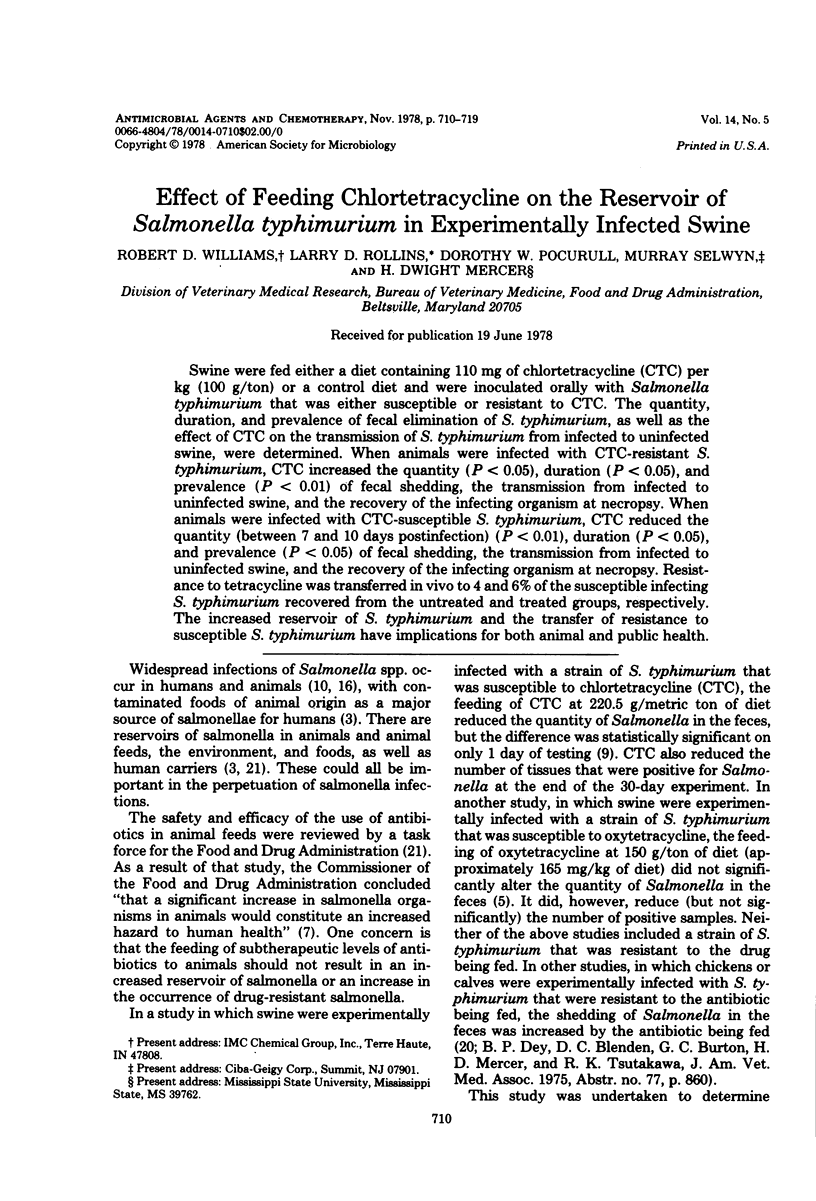
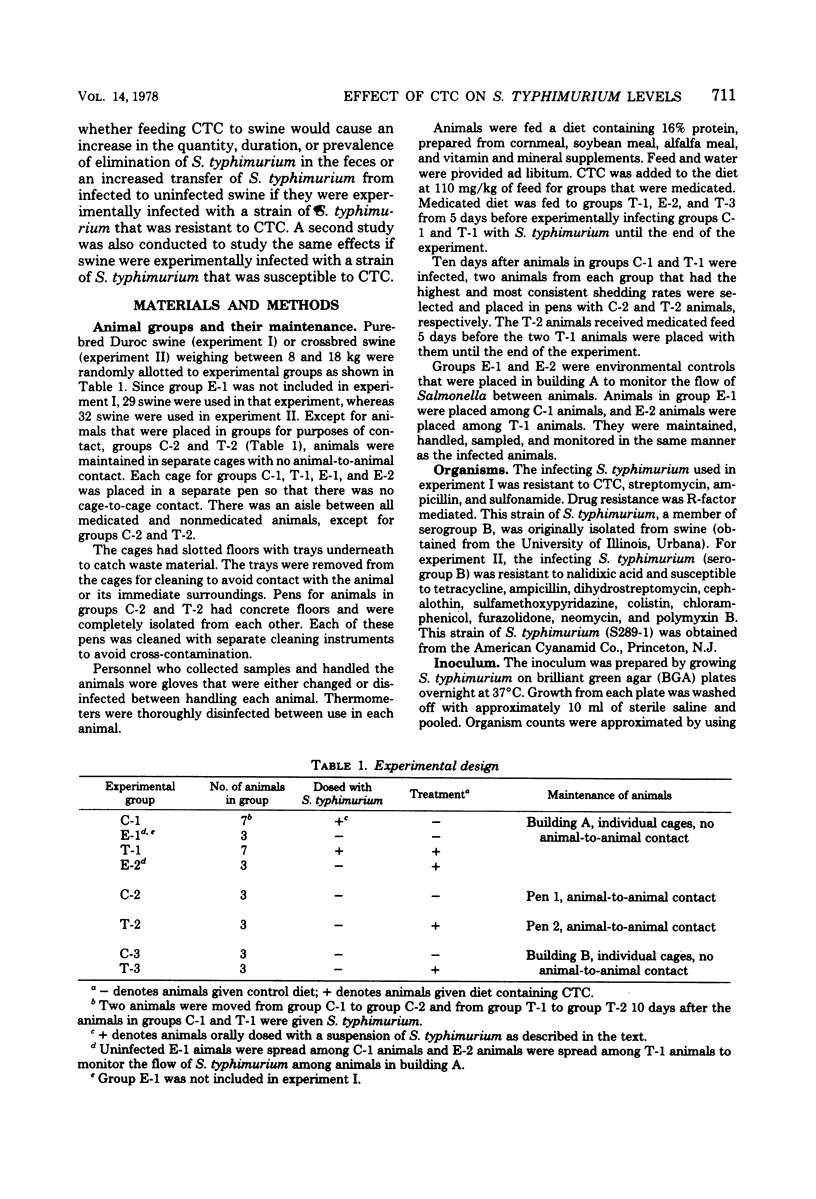
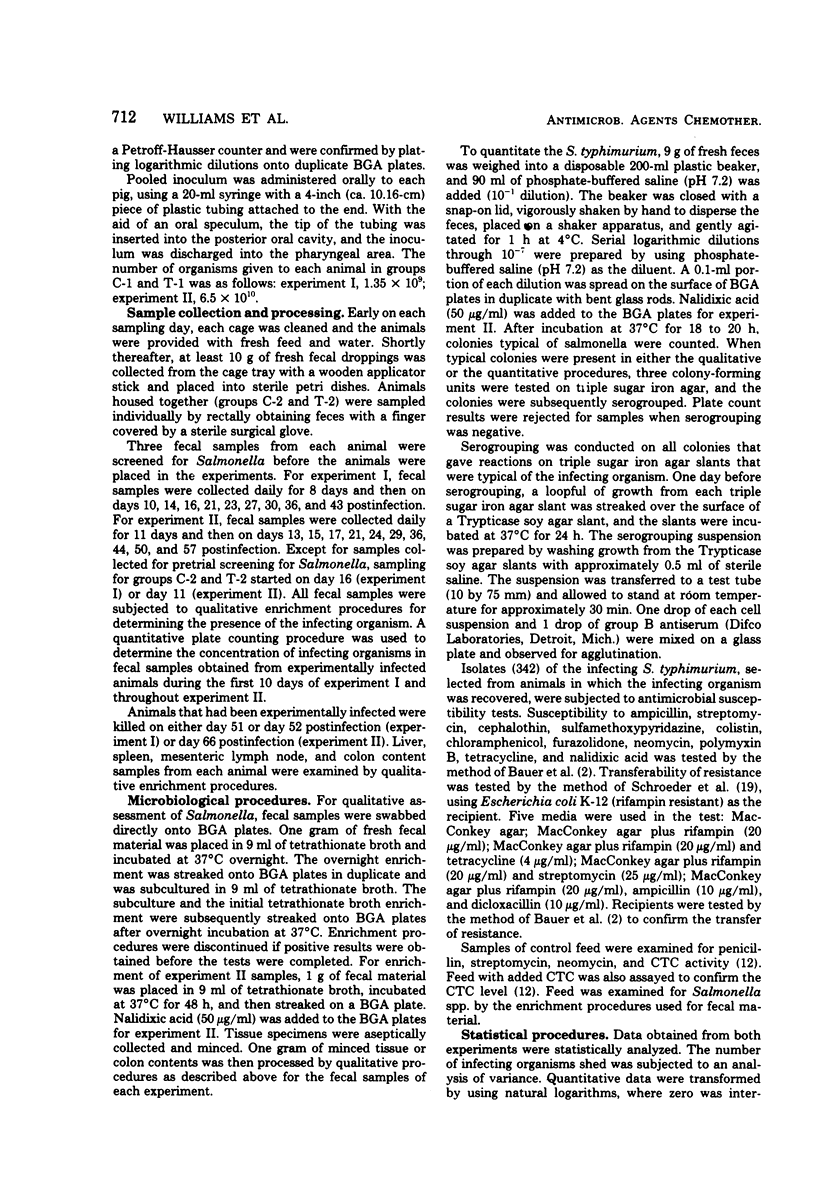
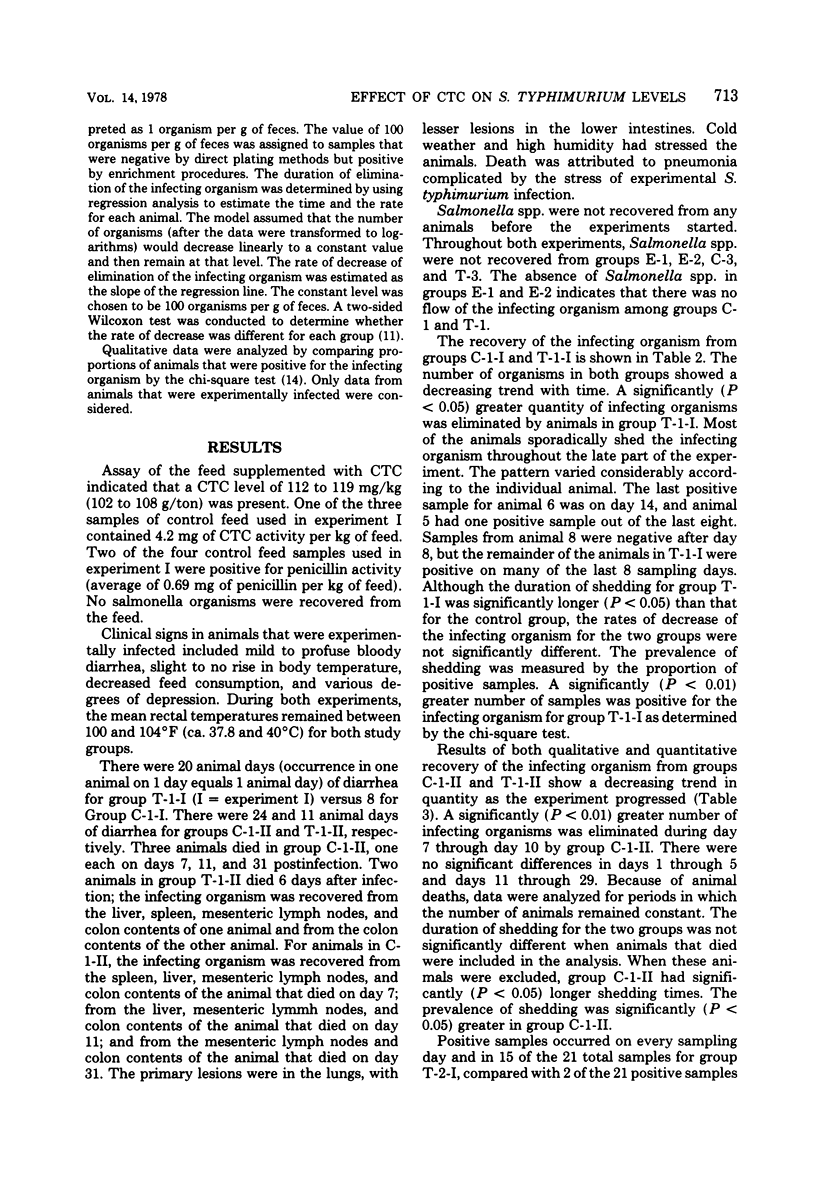
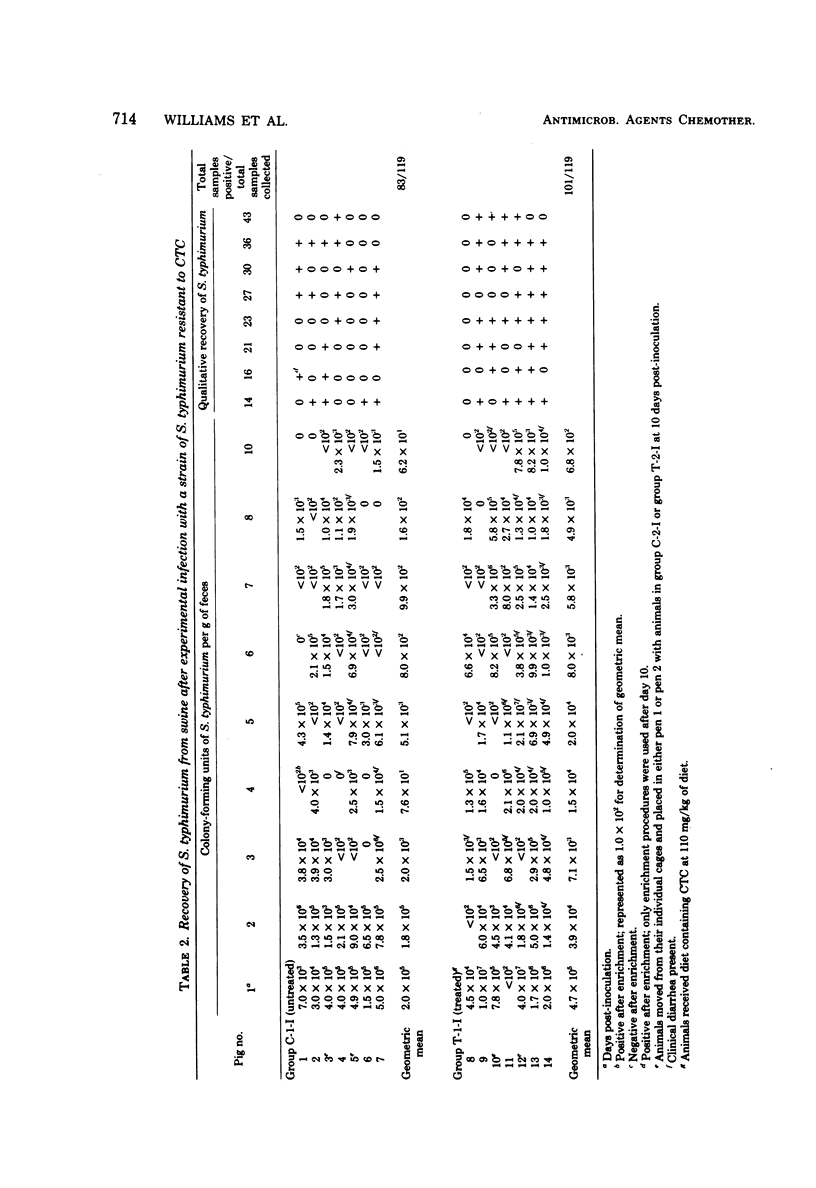
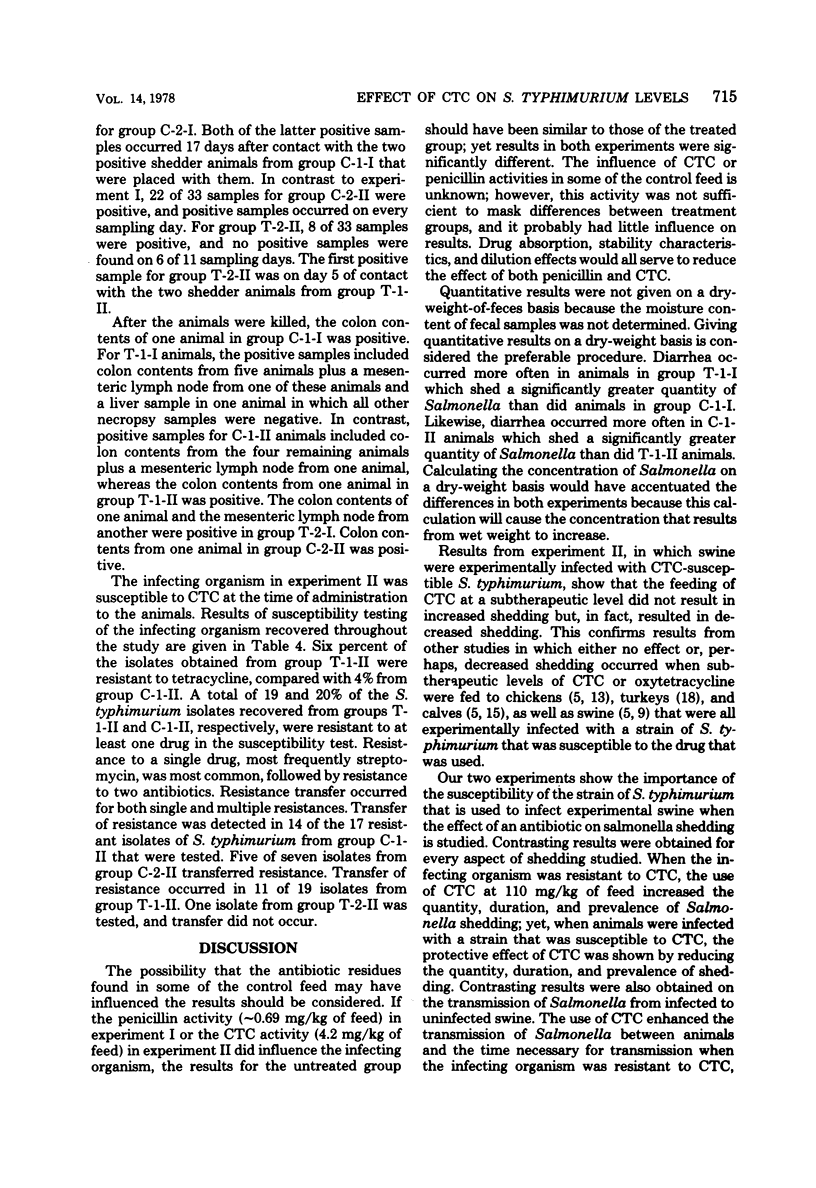
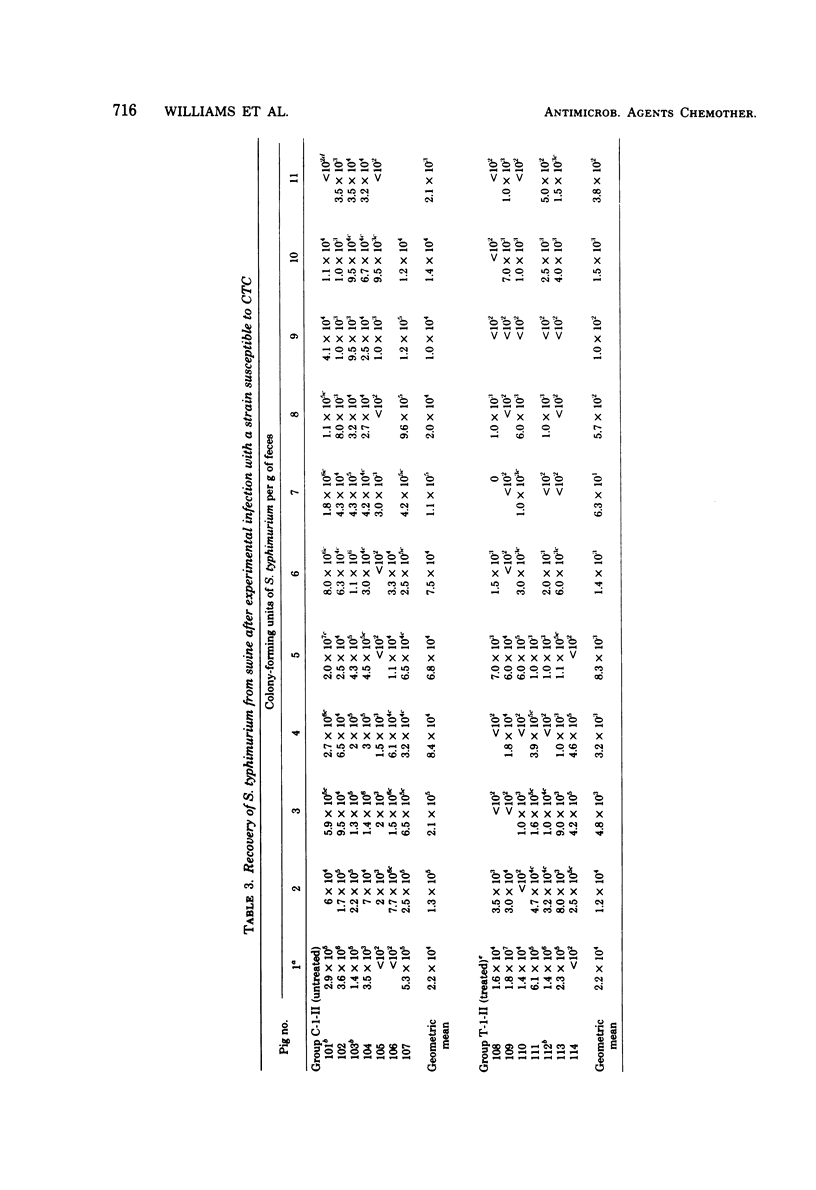
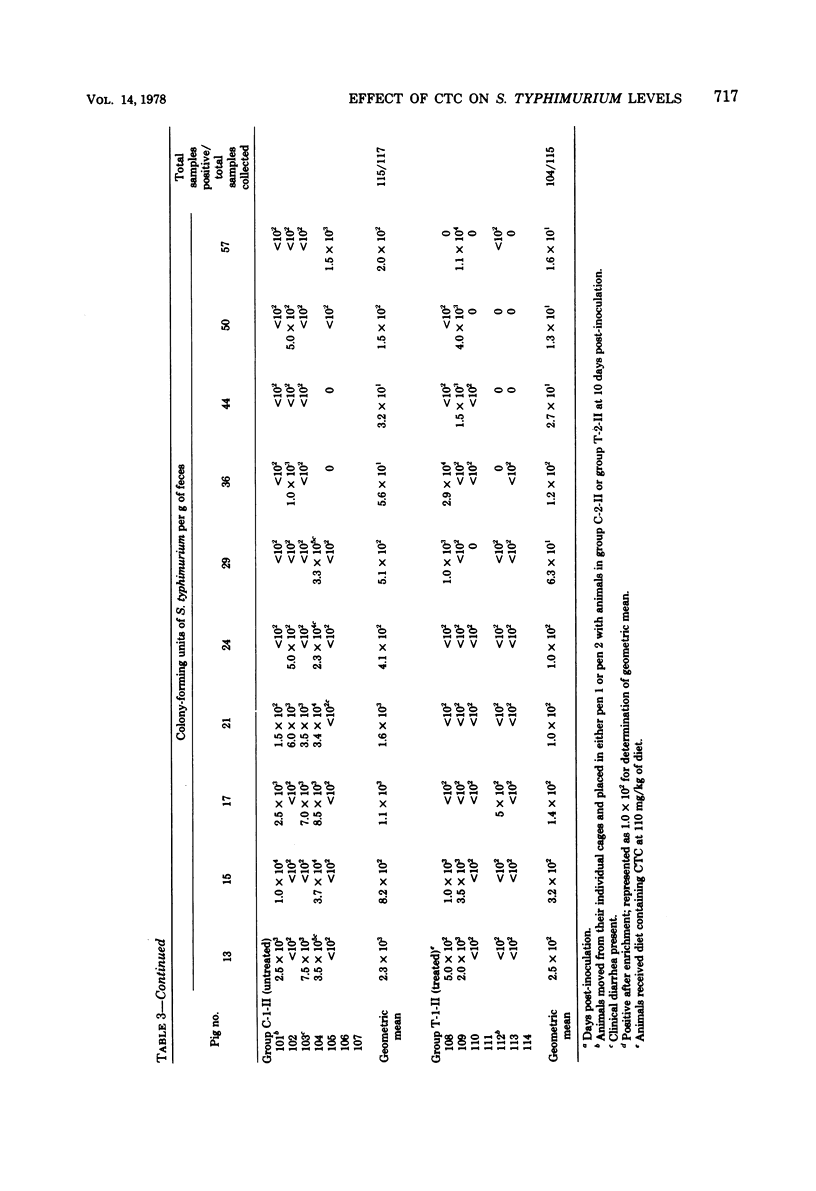
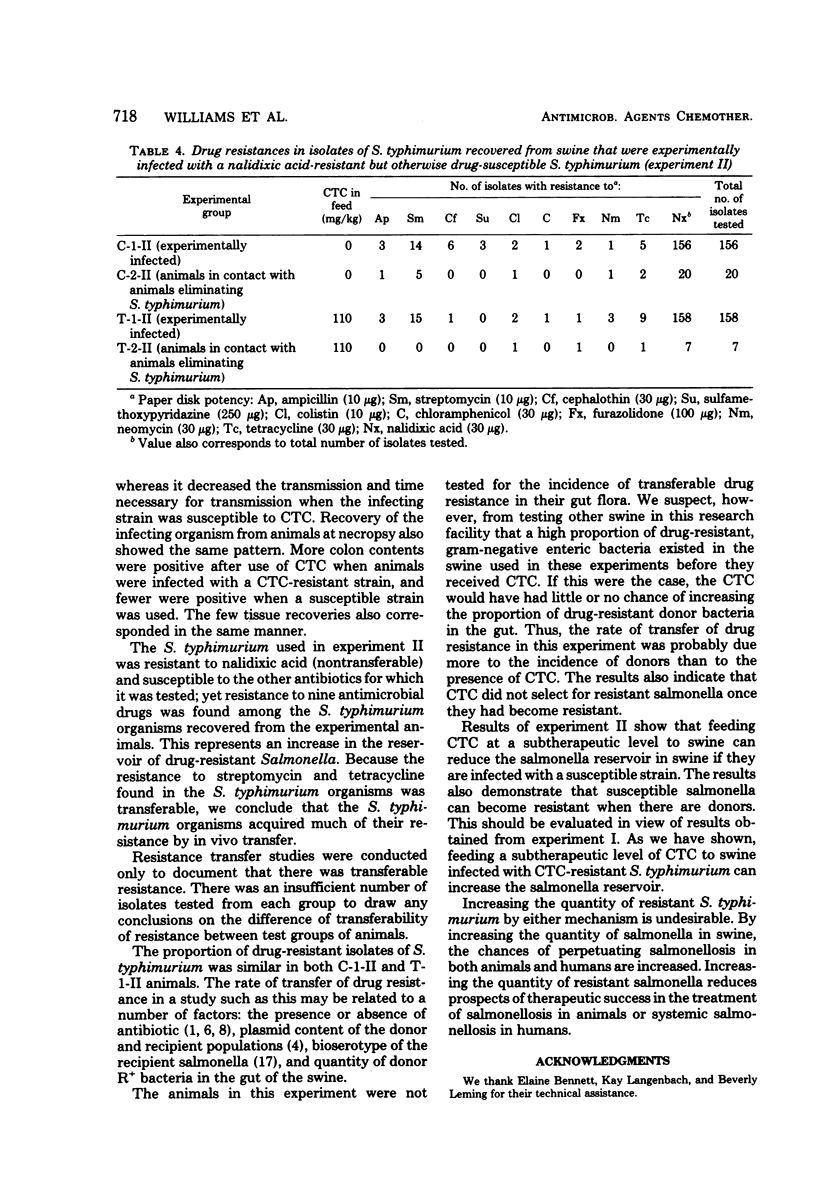
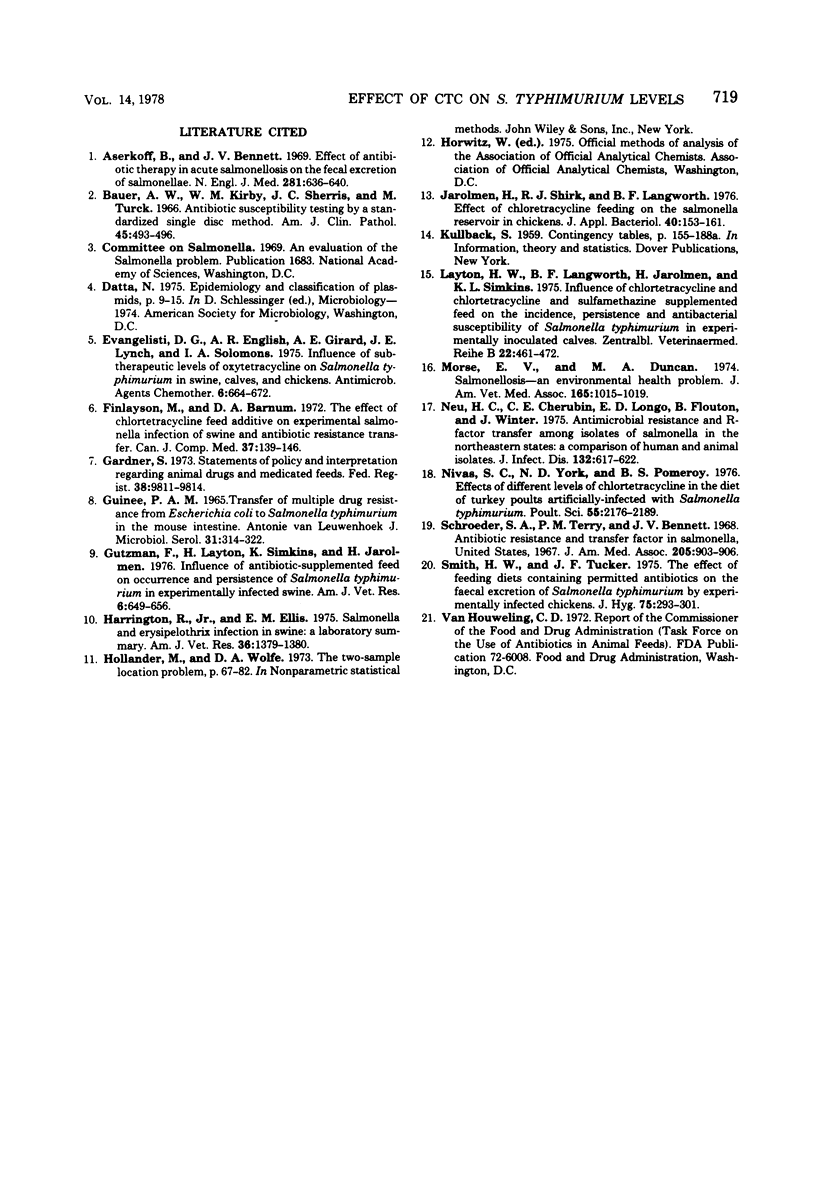
Selected References
These references are in PubMed. This may not be the complete list of references from this article.
- Aserkoff B., Bennett J. V. Effect of antibiotic therapy in acute salmonellosis on the fecal excretion of salmonellae. N Engl J Med. 1969 Sep 18;281(12):636–640. doi: 10.1056/NEJM196909182811202. [DOI] [PubMed] [Google Scholar]
- Bauer A. W., Kirby W. M., Sherris J. C., Turck M. Antibiotic susceptibility testing by a standardized single disk method. Am J Clin Pathol. 1966 Apr;45(4):493–496. [PubMed] [Google Scholar]
- Evangelisti D. G., English A. R., Girard A. E., Lynch J. E., Solomons I. A. Influence of subtherapeutic levels of oxytetracycline on Salmonella typhimurium in swine, alves, and chickens. Antimicrob Agents Chemother. 1975 Dec;8(6):664–672. doi: 10.1128/aac.8.6.664. [DOI] [PMC free article] [PubMed] [Google Scholar]
- Finlayson M., Barnum D. A. The effect of chlortetracycline feed additive on experimental salmonella infection of swine and antibiotic resistance transfer. Can J Comp Med. 1973 Apr;37(2):139–146. [PMC free article] [PubMed] [Google Scholar]
- Guinée P. A. Transfer of multiple drug resistance from Escherichia coli to Salmonella typhi murium in the mouse intestine. Antonie Van Leeuwenhoek. 1965;31(3):314–322. doi: 10.1007/BF02045911. [DOI] [PubMed] [Google Scholar]
- Gutzmann F., Layton H., Simkins K., Jarolmen H. Influence of antibiotic-supplemented feed on occurrence and persistence of Salmonella typhimurium in experimentally infected swine. Am J Vet Res. 1976 Jun;37(6):649–655. [PubMed] [Google Scholar]
- Harrington R., Jr, Ellis E. M. Salmonella and Erysipelothrix infection in swine: a laboratory summary. Am J Vet Res. 1975 Sep;36(9):1379–1380. [PubMed] [Google Scholar]
- Jarolmen H., Sairk R. J., Langworth B. F. Effect of chlortetracycline feeding on the Salmonella reservior in chickens. J Appl Bacteriol. 1976 Apr;40(2):153–161. doi: 10.1111/j.1365-2672.1976.tb04163.x. [DOI] [PubMed] [Google Scholar]
- Layton H. W., Langworth B. F., Jarolmen H., Simkins K. L. Influence of chlortetracycline and chlortetracycline + sulfamethazine supplemented feed on the incidence, persistence and antibacterial susceptibility of salmonella typhimurium in experimentally inoculated calves. Zentralbl Veterinarmed B. 1975 Aug;22(6):461–472. doi: 10.1111/j.1439-0450.1975.tb00611.x. [DOI] [PubMed] [Google Scholar]
- Morse E. V., Duncan M. A. Salmonellosis--an environmental health problem. J Am Vet Med Assoc. 1974 Dec 1;165(11):1015–1019. [PubMed] [Google Scholar]
- Neu H. C., Cherubin C. E., Longo E. D., Flouton B., Winter J. Antimicrobial resistance and R-factor transfer among isolates of Salmonella in the northeastern United States: a comparison of human and animal isolates. J Infect Dis. 1975 Dec;132(6):617–622. doi: 10.1093/infdis/132.6.617. [DOI] [PubMed] [Google Scholar]
- Nivas S. C., York M. D., Pomeroy B. S. Effects of different levels of chlortetracycline in the diet of turkey poults artifically-infected with Salmonella typhimurium. Poult Sci. 1976 Nov;55(6):2176–2189. doi: 10.3382/ps.0552176. [DOI] [PubMed] [Google Scholar]
- Schroeder S. A., Terry P. M., Bennett J. V. Antibiotic resistance and transfer factor in Salmonella, United States 1967. JAMA. 1968 Sep 23;205(13):903–906. [PubMed] [Google Scholar]
- Smith H. W., Tucker J. F. The effect of feeding diets containing permitted antibiotics on the faecal excretion of Salmonella typhimurium by experimentally infected chickens. J Hyg (Lond) 1975 Oct;75(2):293–301. doi: 10.1017/s0022172400047318. [DOI] [PMC free article] [PubMed] [Google Scholar]


